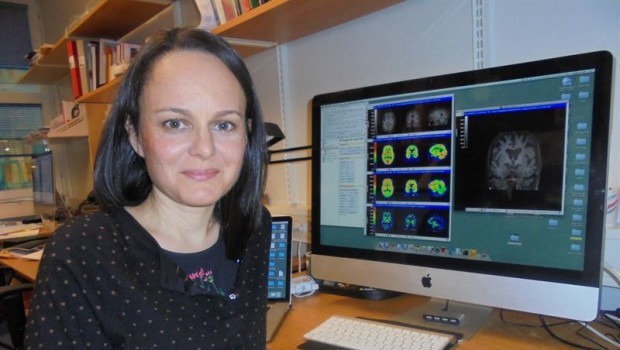Approximately twenty years before the first symptoms of Alzheimer’s disease appear inflammatory changes in the brain can be seen, according to a new study from Karolinska Institutet.
The findings have been published in the medical scientific journal Brain . The findings of the researchers, who monitored several pathological changes in the brain, suggest that activation of astrocytes at an early stage can greatly influence the development of the disease.
Alzheimer’s disease is characterised by the atrophy of brain neurons, especially those involved in memory, and is our most common dementia disease. Exactly what causes the cells to die is not known, but many years before the first symptoms present themselves, pathological changes occur, such as the deposition of the protein amyloid in the form of amyloid plaques, the accumulation of tau proteins and inflammatory changes that eventually degrade the points of contact between neurons. Exactly when the changes take place along this chain of events remains, however, an unanswered question.
By studying families of people with known Alzheimer’s mutations and who therefore run a much higher risk of developing the disease, the researchers were able to examine changes that appear at a very early stage of the disease. The study included members of families with four different known Alzheimer’s mutations and a group of patients with non-inherited, ‘sporadic’ Alzheimer’s disease. All participants underwent memory tests and scans using PET (positron emission tomography), whereby radioactive tracer molecules with a short half-life are introduced into the brain via injection into the blood.
For this study, the team used the tracer molecules PIB, Deprenyl and FDG to study the amount of amyloid plaques, inflammatory changes in the form of astrocyte activation, astrocytes being the most common type of glial (supporting) cell in the brain. They also studied neuronal function in the brain by measuring glucose metabolism (FDG). In order to monitor the changes over time, the PET scans were repeated after three years for half of the just over fifty participants.
The mutation carriers were found to have amyloid plaque and inflammatory changes almost twenty years before the estimated debut of memory problems. The number of astrocytes reached a peak when the amyloid plaque started to accumulate in the brain, and neuronal function, as gauged by glucose metabolism, began to decline roughly seven years before the expected disease symptoms. The individuals from families with inherited Alzheimer’s who did not carry any mutation showed no abnormal changes in their brain.
“Inflammatory changes in the form of higher levels of brain astrocytes are thought to be a very early indicator of disease onset,” explains principal investigator Professor Agneta Nordberg at the Department of Neurobiology, Care Sciences and Society, Center for Alzheimer Research at Karolinska Institutet. “Astrocyte activation peaks roughly twenty years before the expected symptoms and then goes into decline, in contrast to the accumulation of amyloid plaques, which increases constantly over time until clinical symptoms show. The accumulation of amyloid plaque and the increase in number of astrocytes therefore display opposing patterns along the timeline.”
These studies demonstrate that the pathological processes that lead ultimately to Alzheimer’s disease commence many years before symptoms start to show, and that it should be possible to provide early prophylactic or disease modifying treatment. According to the researchers behind the study, the findings indicate that astrocytes can be a possible target for new drugs.
First author of the study is Elena Rodriguez-Vieitez , PhD, senior researcher at Karolinska Institutet’s Department of Neurobiology, Care Sciences and Society.
Source: Karolinska Institutet
Photo: Elena Rodriguez-Vieitez, PhD, Senior researcher, Center for Alzheimer Research, Karolinska Institutet. Credit: Joana B. Pereira








